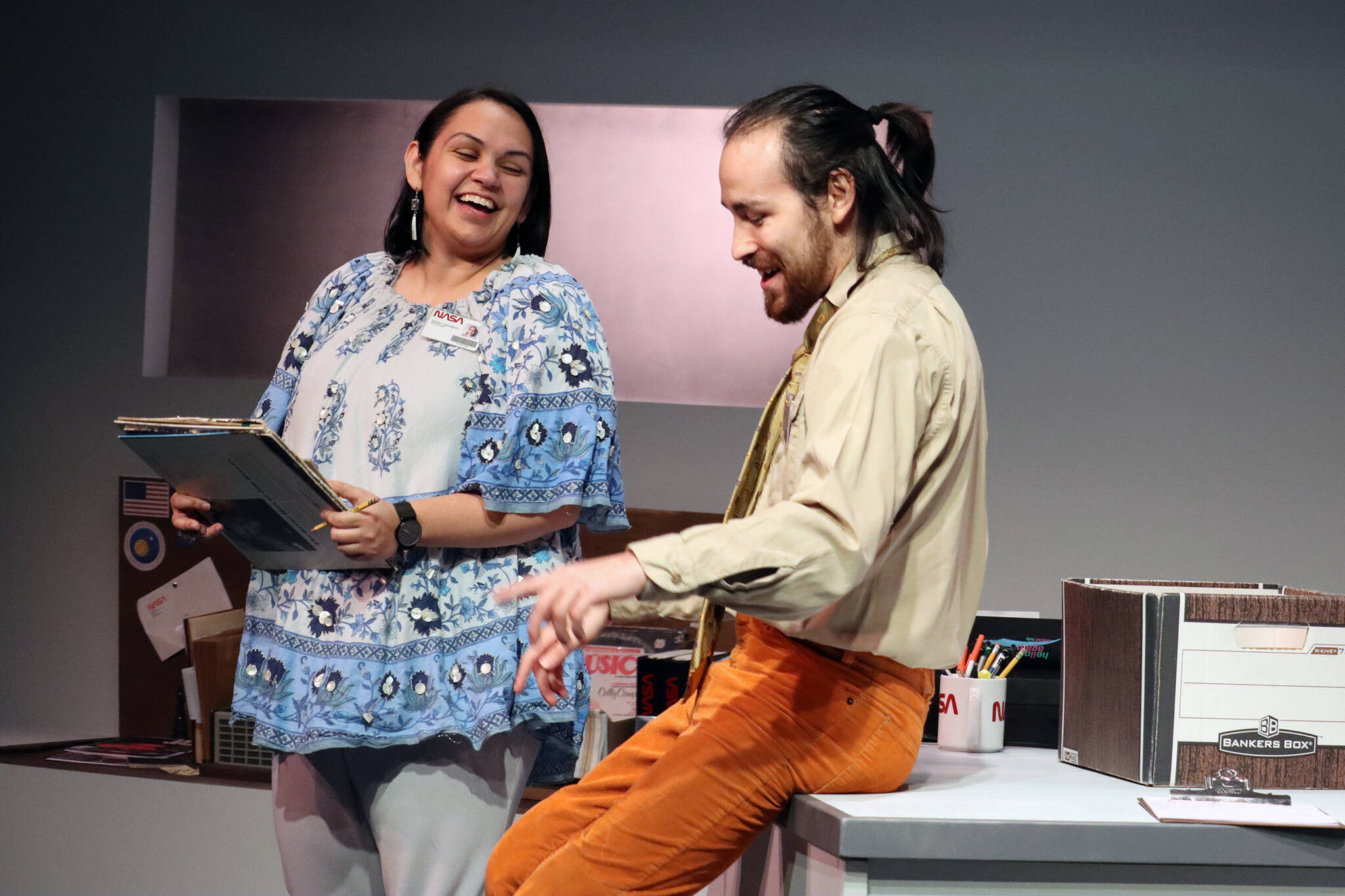This review should probably start with a disclaimer —I don’t like space.
Outer space is a cold void filled with multiple immense objects that through existing, ceasing to exist or changing the way in which they do exist could doom me and everyone I know. I appreciate the aesthetic appeal of a clear night sky, but it’s a visual reminder that eventually our nearest star will blink out, and extinction on the grandest scale imaginable is a certainty.
That space has recently become a playroom for billionaires and a pipe dream for people who would rather terraform a desolate rock than modify the way we treat Earth only adds to the general dreadful malaise and dread I get when contemplating the cosmos.
With all of that out of the way, I really liked Perseverance Theatre’s season debut, “Voyager One,” which is a play with an awful lot of space-related content. That’s partly because after over a year away, it was great to take in a show in person with a fully vaccinated, masked and health-screened audience.
But it’s much, much more because the play written by Jared Michael Delaney is more interested in considering what it means to be human or nearly human, to exist outside of a prescribed role and the importance of a free will than it is in explaining exactly how its space-related trappings work.
[Read more about the new play here]
The end result is a warm and winning welcome back for the theater’s first in-person show since the pandemic began that’s more magical realism based in relationships than hard science fiction. That means “Voyager One” can zoom along most of the time without getting too bogged down in expository details. Some big questions are asked, some answers are tossed out, and like its namesake spacecraft, “Voyager One” keeps briskly moving. Launched in the late ’70s, the Voyager spacecraft were dispatched into an indifferent void carrying records meant to serve as a greeting to any being that might find them. “Voyager One” tells a story inspired by the project’s past and distant future.
The play is essentially two period pieces —one in a far-distant future, one in the 1970s —that share connections teased out as “Voyager One” goes on.
The future-set storyline is a slow-burn mystery about a woman with no memory of a journey that spans many, many years and lightyears. The ’70s-set scenes take on a rom-com tone and tell the story of two low-level workers who are doing what one character refers to as “grunt work” to make the famed Voyager project and its golden record possible.
The ‘70s-set scenes reliably drew laughs and sounds of sympathy from the opening-night audience. The future-set scenes whet the appetite for more information.
Scenes from the two settings run in seemingly parallel lines until an inevitable but still surprising intersection. The structure adds an extra sense of propulsion.
The scenes crossfade into one another like audio from a DJ’s turntable. It’s a rewarding structure as it allows context, commentary and additional information to stack. Fittingly, the album “Parallel Lines” by Blondie is prominent in the play, which fits with both the structure of “Voyager One” and a strong undercurrent of feminism that runs through the script. It doesn’t necessarily fit the play’s timeline —Blondie released the landmark new wave album in ‘78, Voyager 1 launched in ‘77 —but in light of some late plot developments, “Voyager One” might not share our reality.
The show’s use of Alaska Native languages —a Perseverance-specific flourish —is another great touch.
While the set, sound design and script are strong, the cast of “Voyager One” makes it a cohesive whole.
Actors Erin Tripp and Jared Olin portray the visible characters in both eras of the play —Kelsey Riker gives voice to an artificial intelligence in the future-set scenes —and the distinct characters let both actors show range. A cast this lean needs its actors to carry the show, and Tripp and Olin are more than capable.
Tripp portrays both a woman who awakes aboard a station with no memory of her journey or identity with an authoritative detachment. She also plays a self-assured woman of the ’70s with hard opinions about the Pittsburgh Steelers, reproductive health care, the inevitability of extinction and John Lennon lyrics. The contrast in characters is sizable and Tripp brings both to life.
Olin plays future researcher Ceygan —pronounced like the surname of the nerd folk hero Carl Sagan — and low-level NASA project-worker Carl. While both characters are motor-mouthed, one is an inherently likeable guy with a bedrock of open-minded decency seemingly at odds with his time. The other is a frantic researcher with poor control of his emotions.
Riker’s role isn’t asked to tackle anything particularly flashy. The AI, credited as The Voice, gets to ask and answer some ponderous questions, but is otherwise is purposefully stoic. However, she nails what’s asked of her. Really and truly, Riker should be saying “recalculating” for a big GPS manufacturer somewhere.
The life breathed into the characters, compelling chemistry and just enough late-lingering mystery keep the show enjoyably absorbing even as some late exposition does heavy lifting to tie everything together.
It’s not the most elegant, but it’s an ending that feels earned. Plus, unlike some science-fiction epics, it actually, definitively ends. It provides a sense of closure while ensuring audiences will likely leave the theater imagining what the future has in store for the characters of “Voyager One.”
After all this time in the unknown of the pandemic, it’s a great greeting for whoever straps on their gear, ventures out and makes contact with the play.
• Contact Ben Hohenstatt at (907)308-4895 or bhohenstatt@juneauempire.com. Follow him on Twitter at @BenHohenstatt.

